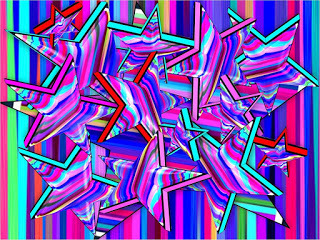Three Modern Tilts for Talent Management Innovation
 People are always the most valuable asset in any business before, today, and future. The focal point for talent management does shift from managing people as cost & resource to asset and human capital. In essence, the business is running by people (employees) for the people, and digital is the age of people. And there are three modern tilts for talent management and performance management innovation:
People are always the most valuable asset in any business before, today, and future. The focal point for talent management does shift from managing people as cost & resource to asset and human capital. In essence, the business is running by people (employees) for the people, and digital is the age of people. And there are three modern tilts for talent management and performance management innovation:
Continuous Performance Management focusing on the future: The traditional performance review is an annual event which focuses on the past with quantitative measures. However, the past is over. The performance review should focus on future with frequent interactions and evaluate talent both qualitatively and quantitatively in a continuous way. One of the important tasks of each manager is to help each employee succeed. In most cases, that should be the overriding general goal. Evaluation is an ongoing process, ideally, it happens daily. It is not just about a performance appraisal or focusing solely on an individual. It is about optimizing an organization's most important assets, its employees and that requires many different initiatives and actions. There's the process of continually aligning abilities, talents, aspirations, etc., to important work that an organization needs to be done and of providing feedback to employees on how well the organization feels they are delivering on their commitments. Talent Management includes such things as optimizing the talents of employees at all levels, building a culture that supports the objectives that the employees are to achieve, providing positive reinforcement and corrective feedback and linking behaviors to appropriate consequences, and aligning the organization for success.
Talent Management analytics is no longer 'nice to have,' but 'must have' practices: Information is the power nowadays, the analytics brings important indicators on how HR and organization should focus and invest in human capital and organization efforts on people. You need to make analytics as talent management routine work and spent a lot of efforts. So related technology development and investment are necessary to improve the analytics efficiency. Humans are a complex asset, you need to understand them as a WHOLE person, not just the pieces of data. Hence, avoid those analytical pitfalls, focus on talent empowerment, not just “data boom.” ”Measure everything," companies run the risk of demotivating their employees. Taken to an extreme, analytics can dehumanize the workplace and cause top performers to grow weary of the need to conform to the myriad new standard. So there's still a journey on transferring the value of talent analytics to the organizational success ultimately.
 Integrating the “heart “ and “mind” part of Performance Management: A change in focus from evaluating the individual to partnering with the employee to evaluate the quality of the interactions the employee has started with the manager and employee. When you lead a business or an organization, you really need to be passionate about what you are trying to achieve for the customer and long term prosperity of your organization. You then need to be able to convey this passion to your people and show passion for both the customer and your people - this is the 'heart part.' The ' mind' part is then all about: objectives, goals, the alignment of the business strategic goal and the employee’s career goals, talking to people, empathy, appreciation, and encouragement. Relationships become stuck when the passion fades away. Performance Management is more as planning than tools. A manager is involved with his/her people and is there to teach, advise, listen, correct, reward, motivate, and discipline, to make things change for the better. This is Performance Management. Performance Management gets "stuck" when the people in charge get "stuck." Performance Management uses performance evaluation as the main tool, it will not be of much value.
Integrating the “heart “ and “mind” part of Performance Management: A change in focus from evaluating the individual to partnering with the employee to evaluate the quality of the interactions the employee has started with the manager and employee. When you lead a business or an organization, you really need to be passionate about what you are trying to achieve for the customer and long term prosperity of your organization. You then need to be able to convey this passion to your people and show passion for both the customer and your people - this is the 'heart part.' The ' mind' part is then all about: objectives, goals, the alignment of the business strategic goal and the employee’s career goals, talking to people, empathy, appreciation, and encouragement. Relationships become stuck when the passion fades away. Performance Management is more as planning than tools. A manager is involved with his/her people and is there to teach, advise, listen, correct, reward, motivate, and discipline, to make things change for the better. This is Performance Management. Performance Management gets "stuck" when the people in charge get "stuck." Performance Management uses performance evaluation as the main tool, it will not be of much value.
The purpose of those modern tilts for digitizing and innovating talent management is to create the right environment to grow a natural affinity into a "talent,”“ believe in "building talent" where it would otherwise be underutilized or dormant. Just like gardeners to grow the plants, talent/staff managers have to know their employees so well, watering and fertilizing in a different way, some blossom fast, others take the time to get matured. Treat people as human capital to invest in, remove barriers to high performance, fertilize the environment to unleash their potential, communicate what's needed, get information from, and give to employees that is essential for improving their performance. The human capital management approach provides the definition of expectations in a quantitative way, empowers the employee, encourages motivation & innovation and rewards the employee for effort above and beyond the normal expectations
Follow us at: @Pearl_Zhu
Published on September 14, 2016 23:20
No comments have been added yet.



